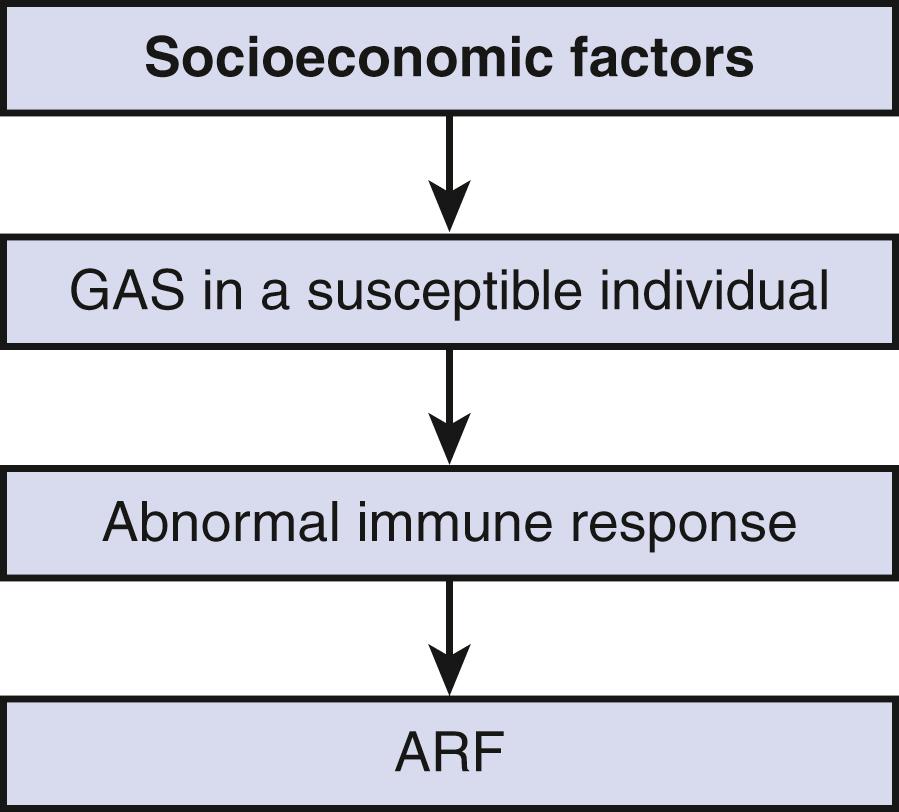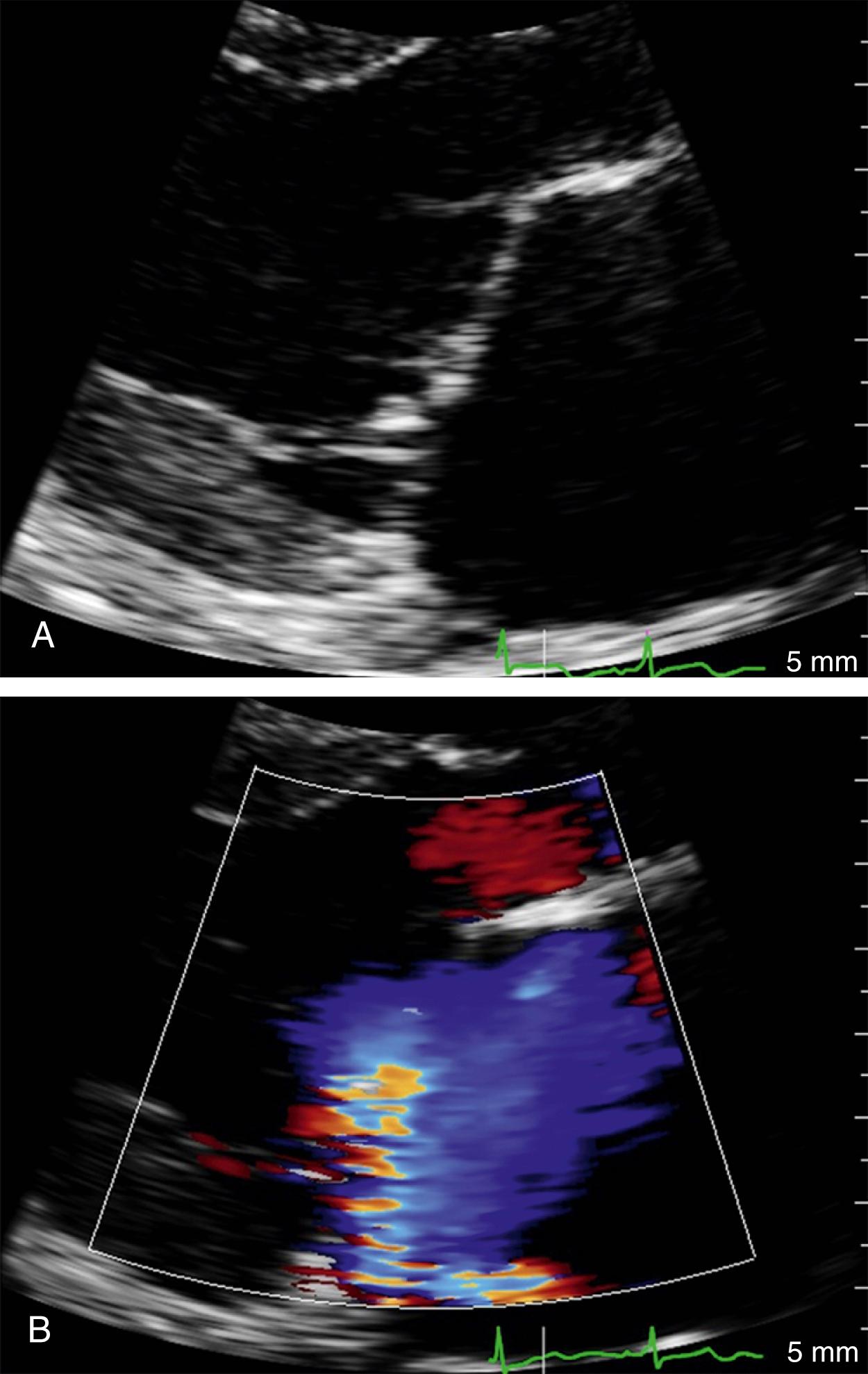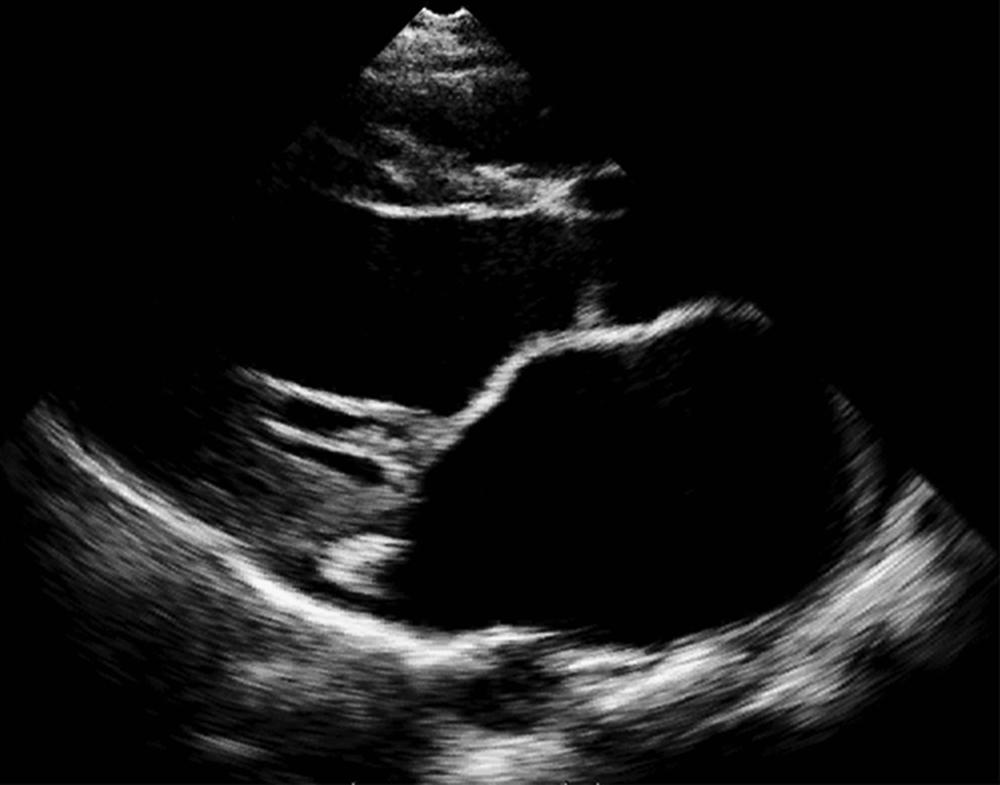Physical Address
304 North Cardinal St.
Dorchester Center, MA 02124
Acute rheumatic fever (ARF) is an inflammatory disorder that occurs after a throat infection with group A β-hemolytic streptococcus infection (GAS). Rheumatic heart disease (RHD) is a chronic disorder in which the heart valves are damaged after an episode of ARF, or as is frequently the case, no identifiable history of ARF. The latter scenario has been defined as latent or subclinical RHD.
Currently, ARF and RHD are not commonly encountered in the United States and all developed countries. When cases are encountered, they are usually found among immigrants. In contrast, the incidence of ARF in children ages 5 to 14 years worldwide is estimated to range from 300,000 to 350,000 per year. The majority of these cases are found in sub-Saharan Africa, but because of the paucity of epidemiologic studies, accurate estimates of ARF are lacking. The highest documented rates of ARF and RHD in the world are in indigenous Australians
ARF occurs after a GAS infection. In the absence of previous ARF or RHD, a small minority of individuals (0.3%–3%) with GAS throat infections develop ARF, RHD, or both. The pathogenesis of ARF is complex and may be multifactorial. The general consensus is that the development of ARF requires four key factors—a susceptible host, GAS infection with specific strains that are thought to be rheumatogenic (M subtypes 1, 3, 5, 6, or 18), an abnormal immune response, and environmental factors (e.g., poverty and overcrowding)—that contribute to this interaction ( Fig. 149.1 ). ,

The revised Jones criteria of 2015 offer an integrated clinical approach to improve the diagnosis of ARF. Similar to prior iterations of the Jones criteria, evidence of a preceding streptococcal infection (throat culture serology) with either two major criteria or one major and two minor criteria are required for the diagnosis of ARF. However, before the application of any criteria, the clinician should determine the patient’s risk for ARF. If an individual comes from a community that has a low prevalence of RHD (<1 case in 1000) or ARF (<2 cases in 100,000), she or he is classified as low risk. Individuals who are not from low-risk communities are grouped together as moderate to high risk. The criteria proposed in the 2015 iteration differs for low-risk populations versus those deemed moderate to high risk ( Table 149.1 ) with regard to joint manifestations, the temperature level, and the erythrocyte sedimentation rate (ESR) level. , The rationale for these changes is based on the desire to improve the detection of ARF in moderate- and high-risk populations by using more sensitive criteria.
| Low-Risk Population | Moderate- to High-Risk Population |
|---|---|
| Major | Major |
| Carditis | Carditis |
| Polyarthritis | Polyarthralgia, monoarthritis, polyarthritis |
| Chorea | Chorea |
| Erythema marginatum | Erythema marginatum |
| Subcutaneous nodules | Subcutaneous nodules |
| Minor | Minor |
| Prolonged PR interval | Prolonged PR interval |
| Polyarthralgia | Monoarthralgia |
| Fever >38.5°C | Fever >38°C |
| ESR >60 | ESR >30 |
| CRP >3 mg/dL | CRP >3 mg/dL |
The second major change in the revised Jones criteria of 2015 is that echocardiography is germane to the diagnosis of carditis and that the absence of echocardiographic evidence suggestive of ARF excludes the diagnosis of ARF . The identification of valvular regurgitation that is not detectable with clinical examination—termed subclinical carditis —now constitutes a major criteria in all populations. An additional advantage of echocardiography is the detection of concomitant subclinical pericardial effusions and left ventricular (LV) dysfunction and the differentiation of physiological murmurs from pathology, especially in febrile or hyperdynamic states. , The latter scenario can often lead to an incorrect conclusion that ARF may be present, as was the case in a study by Abernethy and coworkers. The most important advantage of echocardiography is that it can identify an alternative diagnosis, such as mitral valve prolapse or congenital heart disease. ,
There are two major limitations to echocardiography being used as diagnostic criteria. First, it is a relatively expensive examination that is not widely available in poorer communities where the prevalence of ARF is high. Second, unless end users of echocardiography have adequate training, misdiagnosis may easily occur, especially because adequately trained cardiologists or sonographers are unlikely to be working in rural or semirural areas.
The aim of echocardiography in assessing valvulitis in ARF is first to integrate the morphologic abnormality of the mitral or aortic valve with the presence of pathological regurgitation and second to differentiate morphologic features of ARF from chronic RHD. This is most pertinent to the mitral valve as the morphologic echocardiographic features of the aortic valve are similar in ARF and RHD ( Table 149.2 ). Morphologic mitral valve thickening may be focal and may represent valvulitis. Vasan and coworkers reported nodules detected on the body or the tips of the leaflets in almost 25% of patients with ARF. They postulated that these nodules represent the echocardiographic equivalents of the verrucae seen either at surgery or in autopsy specimens. It is essential that the echocardiographer integrate the morphologic abnormalities with Doppler evaluation of regurgitation ( Figs. 149.2 and 149.3 ; ![]() ).
).
| ARF Morphology | Chronic RHD Morphology | Pathological Regurgitation | |
|---|---|---|---|
| Mitral |
|
|
|
| Aortic |
|
|
|


Video 149.1. Left parasternal view demonstrating prolapse of the anterior mitral leaflet with thickened chordae and small nodules visible, which was thought to represent verrucae in a patient who fulfilled the criteria for acute rheumatic fever.
Within the correct clinical context, the presence of any chronic rheumatic morphologic changes on the mitral valve implies that recurrent carditis may require exclusion. An important caveat when interpreting Doppler data is that a minimum of one view is required to satisfy the required jet length and characterize the timing of regurgitation. However, the color jet needs to be evaluated in multiple views at standard technical settings, with the imager using color M-mode and continuous-wave Doppler of the regurgitant jet to aid in timing the duration of the regurgitant jet. Other echocardiographic features of carditis include the presence of LV dysfunction out of keeping with the degree of valvular regurgitation, which is suggestive of myocarditis and the presence of a pericardial effusion.
It is essential that the echocardiographer avoid several pitfalls in the diagnosis of ARF ( Box 149.1 ). ARF most commonly affects the mitral and aortic valves; involvement of the tricuspid and pulmonary valves is uncommon. Mitral regurgitation (MR) is the most common lesion encountered in ARF; its mechanisms are multifactorial and should be carefully evaluated using echocardiography to identify the mechanisms at play, particularly in patients who may require surgery ( Fig. 149.4 ). Currently, the assessment and quantification of valvular regurgitation should be based on the American Society of Echocardiography (ASE) guidelines on valvular regurgitation despite the lack of modern studies on ARF that determine long-term outcomes based on using this approach.
Become a Clinical Tree membership for Full access and enjoy Unlimited articles
If you are a member. Log in here